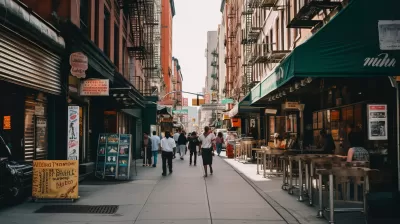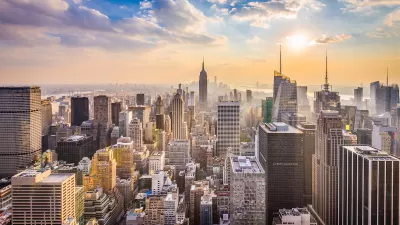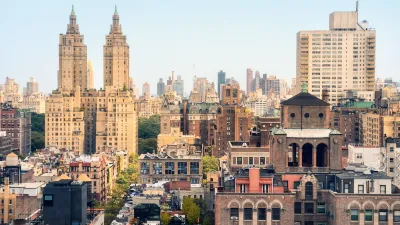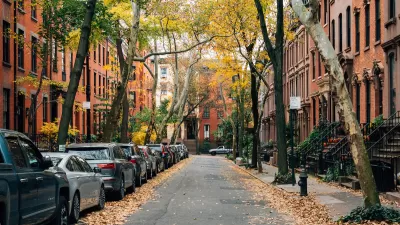The housing-oriented component of Mayor Eric Adams’ City of Yes proposal could serve the double purpose of making housing more affordable and reducing GHG emissions and car dependency.

The New York League of Conservation Voters (NYCLV) is calling on conservation-minded New Yorkers to support the City of Yes for Housing Opportunity initiative, arguing that “This zoning proposal will make substantial progress towards addressing NYC’s current housing crisis, and though its name may not suggest it, COY for Housing Opportunity will also bring the city closer to achieving its ambitious climate goals.”
For NYLCV, the proposed zoning reforms serve the double purpose of increasing housing affordability and reducing vehicle miles driven (VMT) and GHG emissions. “And by ingraining walking and public transit use into daily life, TOD promotes cleaner, healthier lifestyles, benefiting New Yorkers and protecting the environment.”
The initiative will help reduce carbon emissions by encouraging transit-oriented development and reducing parking requirements, according to NYLCV. “Other components of the plan, such as town center zoning (which would work alongside TOD to uplift mixed-use, pedestrian-friendly communities) and residential conversions of non-residential buildings (which would further densify urban cores) will also support the city by creating livelier communities less reliant on pollutive modes of transportation.”
FULL STORY: City of Yes for Housing Opportunity Will Protect New York’s Environment

Planetizen Federal Action Tracker
A weekly monitor of how Trump’s orders and actions are impacting planners and planning in America.

Chicago’s Ghost Rails
Just beneath the surface of the modern city lie the remnants of its expansive early 20th-century streetcar system.

San Antonio and Austin are Fusing Into one Massive Megaregion
The region spanning the two central Texas cities is growing fast, posing challenges for local infrastructure and water supplies.

Since Zion's Shuttles Went Electric “The Smog is Gone”
Visitors to Zion National Park can enjoy the canyon via the nation’s first fully electric park shuttle system.

Trump Distributing DOT Safety Funds at 1/10 Rate of Biden
Funds for Safe Streets and other transportation safety and equity programs are being held up by administrative reviews and conflicts with the Trump administration’s priorities.

German Cities Subsidize Taxis for Women Amid Wave of Violence
Free or low-cost taxi rides can help women navigate cities more safely, but critics say the programs don't address the root causes of violence against women.
Urban Design for Planners 1: Software Tools
This six-course series explores essential urban design concepts using open source software and equips planners with the tools they need to participate fully in the urban design process.
Planning for Universal Design
Learn the tools for implementing Universal Design in planning regulations.
planning NEXT
Appalachian Highlands Housing Partners
Mpact (founded as Rail~Volution)
City of Camden Redevelopment Agency
City of Astoria
City of Portland
City of Laramie





























